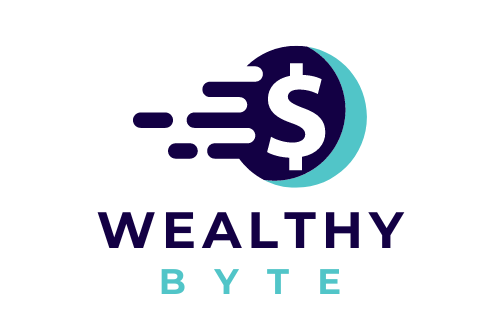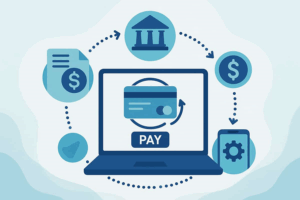With society becoming more and more digital as we enter the new digital generation, and with online enterprises vying for attention through increased personal branding and entrepreneurship, the demand for developing and maintaining web content is at an all-time high. The answer? A content management system. Various applications exist to operate a content management system that enables users to create, edit, and digitally process and manage content while only requiring minimal coding know-how. Whether one wants to own a blog or e-commerce storefront or needs a digital portfolio or professional business storefront, a content management system fulfills any digital content creation and maintenance requirement for small to large enterprises.
A content management system (CMS) is software that allows users to build and edit a website without complicated coding. CMS is the behind-the-scenes software behind countless websites across the globe, practically providing a word processing-like experience for editing text and images and multi user accessibility. But what does CMS mean, and how does it work? This article explores what a CMS is and what a CMS does, the benefits of a CMS, and the different types of CMS for your web development needs.
What is a CMS and How Does It Work?
A content management system (CMS) is a software application that enables users to create, manage, and modify digital content with ease of use through a user-friendly interface without having to deal with complicated coding. Instead of having to learn HTML, CSS, or even JavaScript to understand the fundamentals of building a website from the ground up, a CMS provides a simpler, more efficient means of accomplishing the same goal through a digital dashboard that allows for easy content implementation and modification.
A CMS consists of two main components:
- Content Management Application (CMA): This is the frontend interface that allows users to create, edit, and organize content without technical knowledge. It includes text editors, media upload tools, and formatting options.
- Content Delivery Application (CDA): This is the backend system that stores content, processes user requests, and ensures that website visitors can view the published pages correctly.
When a user adds a blog post, uploads an image, or modifies a page, the CMS automatically updates the website’s structure and delivers the content to visitors in an organized manner. This makes content management efficient and accessible to individuals and businesses looking to maintain an online presence.
The Key Features of a CMS
A CMS such as the one that Storyblok offers comes with all the content publishing, managing, and optimizing capabilities out of the box; ease of access is merely that. Whether one is running a personal blog, an e-commerce platform, or a web page for one’s company, a CMS has everything one needs for content management, so one would not need to start from scratch with coding.
Therefore, a CMS allows you to do content management so seamlessly and effortlessly, that it can be done even a single freelancer or by a staggering corporate team. Perhaps the most elementary, most powerful part of a CMS is the site’s visual editor. Suitable for everyone the Visual editor enables you to edit texts, insert images, incorporate videos and create pages from zero without knowing a single line of HTML or CSS. It is similar to a word processor in that it enables you to quickly and easily create content.
This is an ideal tool for a company or any organization that requires regular updates on their site, saving time and money of constantly paying a website developer for small changes. And another key component is a powerful media management system for uploading, saving, sorting, and optimizing photographs, videos, and other media elements. A handy media library facilitates adding photographs to blogs, product pages or company announcements, and improves the experience of all who check out the site. Additionally, many CMS systems also have image compression and optimization systems as well, meaning that users do not have to worry about oversized images negatively impacting a site with the proper quality for rendering. User roles and permissions will help collaborative content building efforts. While lesser operations may exercise well written in single author/single creator situations, larger enterprises require multi-author sites and e-commerce locations that demand different contributions from different individuals throughout the complete website.
A CMS affords an admin the ability to grant different access and permission levels because it knows who should be responsible for what, editing, and publishing. For example, an editor edits and publishes. A contributor can create drafts and ask for edits. These levels and hierarchies promote proper ethics, security, and efficiency. In addition, a CMS has SEO features, which are critical to elevating a site’s position on search engine results pages. The opportunity to add and adjust meta tags, build permalinks, include alt text on images, and suggestions for internal linking and XML sitemaps ensure that content is most adjusted to the needs of Google (and other search engines) compliance. Furthermore, many CMSs generate plugins with external SEO providers like Yoast SEO for WordPress or Ahrefs so that site administrators can assess keyword efficacy and undertake informed adjustments to optimize their content strategy.
Another major functionality afforded by a CMS is content scheduling. Users can create and save (queue) content, having it go live automatically on a future due date. This is mostly used for news sites that need same-day publication and day-of marketing and social media efforts. For example, someone might want their blog post to go live on the same day as a product release or while a conference is going on; this capability ensures that it can without needing to go into the backend and manually publish on that day. Similarly, many of today’s CMSs offer version control and revision history. Should a content creator decide to roll back to an older version of a particular page or article, the feature makes it easy and time-saving to get it done quickly and for teams working on collaborative efforts, it allows for lost work or unnecessary changes not to be permanent. For those CMSs that are more enterprise-level, multilingual functionalities are available.
This is a plus for those companies that want to make a regionalized version of their site. A site like this is essential for international companies with diverse audiences and compliance needs. Ultimately, these qualities render a CMS essential to keep a website running smoothly so that businesses and individuals don’t have to fret about all the technical minutiae behind the scenes, but instead, dedicate all their efforts to generating high-quality content. With the right precautions, processes, and user interaction, a CMS can do everything from a basic, at-home blog penning thoughts on the world with personal musings to an extensive database-driven company’s intranet and anything in between. It’s critical technology for any web-based endeavor.
The Benefits of Using a CMS for Website Management
The advantages of a Content Management System (CMS) include increased efficiency, scalable options, and ease of use across all types of websites. Whether one is creating a blog, a business page, or a future e-commerce site, a CMS fosters enhanced content creation, dependability, and ease of use. A CMS facilitates the content-related endeavors of professional and personal websites without the distraction of worrying about web coding and other such endeavors. Possibly the biggest benefit of a CMS is that it’s easy to use. Virtually anyone even without coding knowledge can create, edit, and manage a site with little web development experience. Therefore, businesses need not depend upon developers for every little change; marketing teams, reporters, and small business owners can access their content and change it without getting bogged down by technicalities.
Most CMS options come equipped with customizable dashboards, drag and drop features, and a WYSIWYG (What You See Is What You Get) format that allows non-developers to easily create content and customize websites. Furthermore, content consistency and collaboration are major advantages. For companies and firms that boast many different content creators, consistent content, in line with branding styles and updates, is even more necessary. A CMS allows for formatting styles and regulations to be instituted across the board more easily, as one has access to the backend to ensure each page/post is the same. In addition, when someone edits a page or post, it can have a timestamp indicating when it was changed so that the transparency of edits is acknowledged.
With user roles and permissions, people can have access to everything or limited visibility in certain areas. For example, a contributor can write an article, a peer can review it, and a section editor can approve it, but only the admin/site owner should be able to publish it. Thus, with various levels of permission, this CMS encourages productivity while maintaining security and trust of the site. In addition, another benefit that makes a CMS an attractive option for businesses is scalability. As a company grows, so does the addition of changes, new pages, and integrations needed. A CMS supports growth without starting from scratch with a new website. For instance, years later, a company might want to add a blog or eCommerce section, access an AI recommendation engine, or ensure SEO text supports voice-search capabilities. A CMS allows for these features easily.
In addition, many CMS offer plugin marketplaces or API access where companies can reach out to third-party offerings to have similar features, such as integration with chatbots, payment processing solutions, CRM applications, and marketing automation solutions. Security is one of the greatest concerns about being online, which is why many CMSs have security features from the get-go to avoid vulnerabilities. A CMS can safeguard your website from hacks, malware attacks, and compromised data. For example, automatic software updates, firewalls, and public and private security plugins, as well as role-based access control, secure sensitive data. This is perfect for CVS, banks, financial institutions, and any organization that collects client information and has online transactions requiring sensitive personal/freelancer or employer information. Furthermore, some CMSs help the process with automatic backup and restore features should data ever be compromised and need protection from unexpected events or cybersecurity threats.
Choosing the Right CMS for Your Needs
The perfect CMS depends on what a company needs at the moment, what its technical knowledge is, and what it foresees for growth. For example, a company that needs a fairly simple and easily accessible platform for blogging or small websites is more likely to go with WordPress since it has thousands of templates and plug-ins available, not to mention community help. On the other hand, a company that needs a more extensive and complicated setup with possibilities of extensive customization and faster content delivery and processing through API integrations might be better with a headless CMS like Contentful or Strapi. These systems are more flexible, allowing a company to create whatever front-end experience it wants while keeping the content stored in one location.
When it comes to e-commerce, the CMS choices are Shopify or Magento since they have additional e-commerce functionalities for inventory, payment processing, and CRM. For more secure needs, Drupal or Adobe Experience Manager (AEM) is the choice for enterprise-level control and trust in future scaling since they offer more extensive customization and security for sensitive data. The best CMS platform is chosen relative to the awareness of present-day business requirements, future business scaling potential, and degree of development capability. A well-functioning CMS makes content creation a breeze and exponentially improves site functionality and user engagement.
Conclusion
Ultimately, a CMS is suitable for any type of website that participates in content creation and management efforts. From blogs to online stores to news sites to company websites each requires different needs that a CMS solves for content creation and management across all ranges of scope and flexibility. The ideal CMS software affects not only the front end with ease of use and operation of the digital experience but also increases back-end ease of use, operations, and productivity. Thus, in anticipation of the future of digital expansion, a CMS that supports flexibility will allow for future security, operation, and expansion.


















